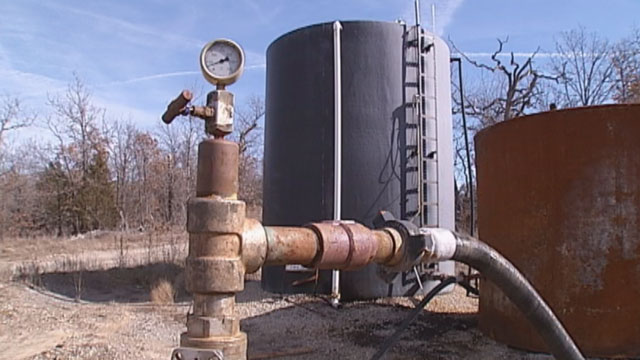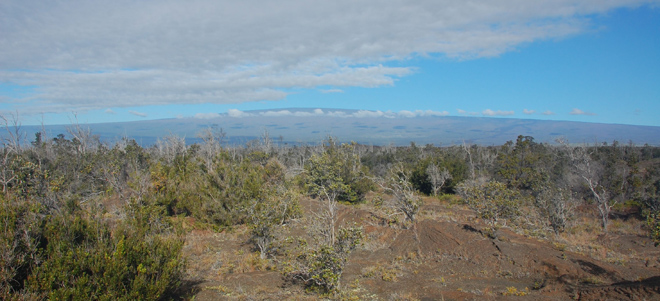
© AP PHOTO/SUE OGROCKIIn this Sunday, Nov. 6, 2011 file photo, Chad Devereaux works at cleaning up the bricks that fell from three sides of his in-laws' home in Sparks, Okla., after two earthquakes hit the area in less than 24 hours.
Between 1978 and 2008, Oklahoma had just two earthquakes with a magnitude over 3.0. In 2014, thus far, there have been around 200 such earthquakes there, more even than the highly unstable state of California. (They've had 140.)
Experts believe the unusual increase in earthquakes is linked to the number of wastewater wells connected to oil and gas drilling.
Wastewater wells occur when oil and gas companies inject wastewater deep underground. Scientists believe that the wastewater acts as a lubricant in existing fault lines, causing more movement. Hydraulic fracturing, commonly known as fracking, has also been linked to earthquakes, though the majority of Oklahoma's tremors were caused by wastewater wells.

Wastewater well
The USGS and Oklahoma officials are adding monitor stations to best determine which wastewater wells are causing the earthquake issue. There are currently 15 permanent stations and 17 temporary stations.
Thus far, none of the earthquakes in Oklahoma have caused major damage. However, USGS geophysicist Rob Williams believes it is only a matter of time, "Given the rate of earthquakes over the last six months, it's concerning enough to be worried about a larger, damaging earthquake happening, let alone what might happen in the future."


Comment: Proponents of fracking believe that a few small tremors are nothing more than the price of our modern technological civilization and environmentalists are merely creating another brouhaha. What they fail to consider is that large earthquakes around the globe have been found to specifically remote-trigger earthquakes near well sites via surface waves. A U.S. Geologic Service survey studied sites that had a long history of regional subsurface injection. Each triggered site had potential to host a moderate magnitude earthquake, suggesting critically stressed faults. And, each site had a relatively low level of seismicity rate before the first triggering episode. Industrial activity has a strong correlation to the increase in tremors. At least half of the 4.5 magnitude or larger earthquakes to strike the interior of the U.S. in the past decade have occurred in regions of injection-induced seismicity, with the seismic onset following injection by merely days or weeks.